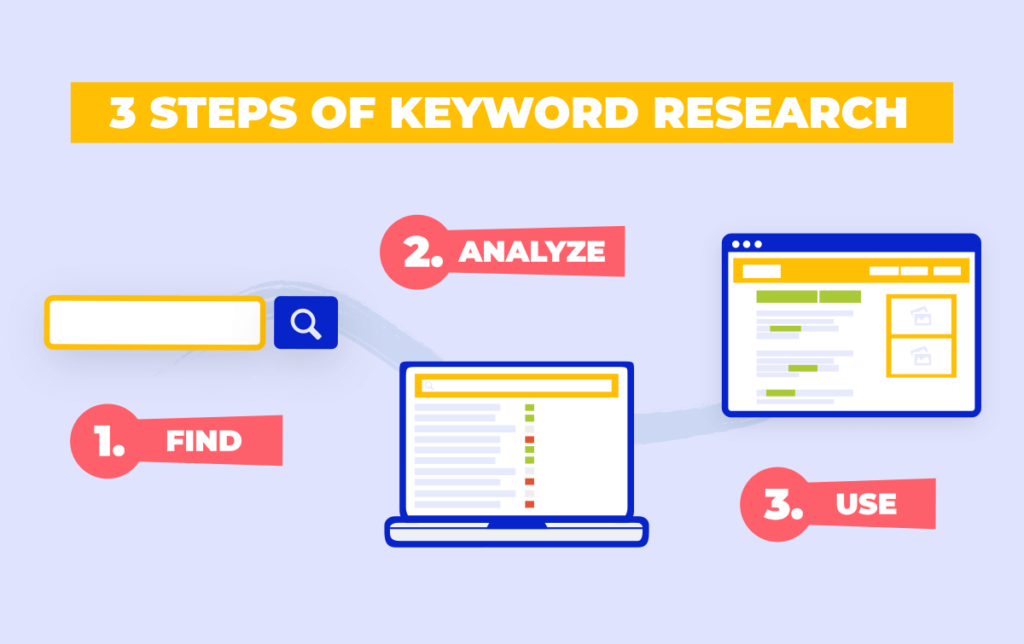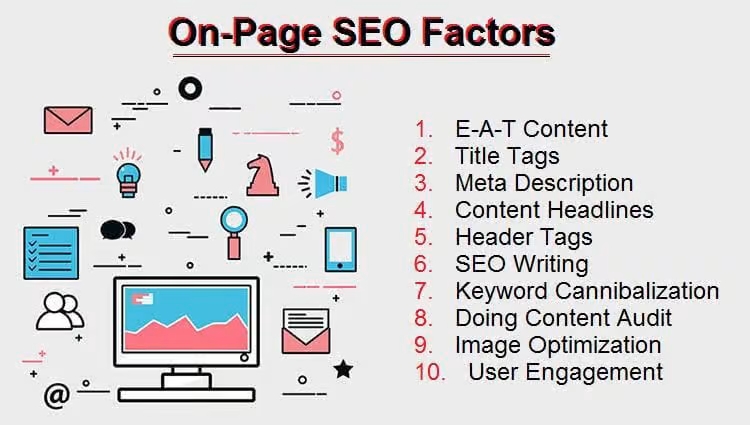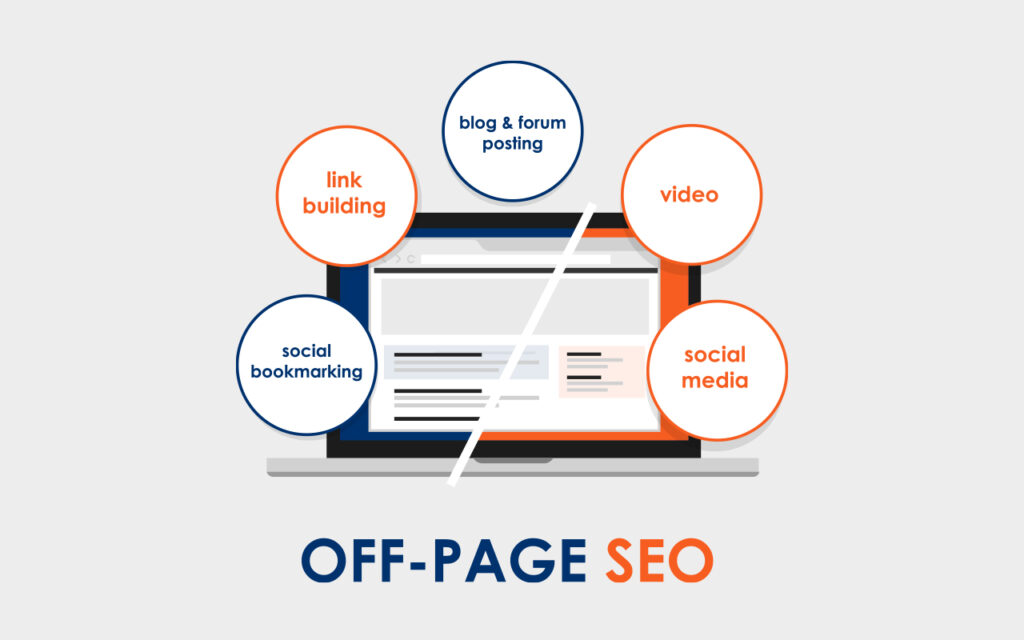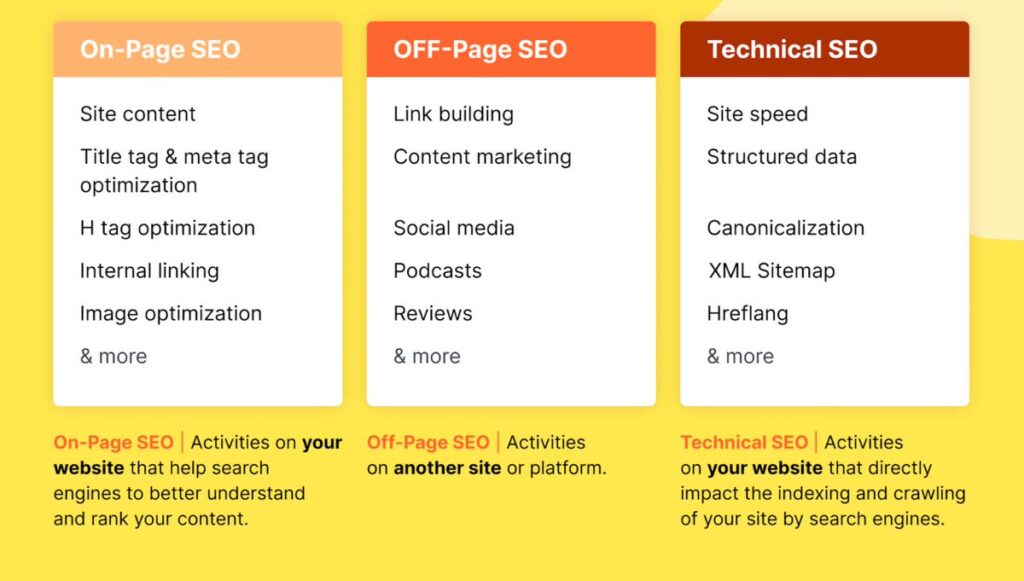Optimizing your website for search engines is essential for increasing its visibility and attracting potential customers.
In today’s digital landscape, businesses must have a strong online presence in order to succeed, and that starts with optimizing your website for search engines.
In this guide, we will cover the basics of SEO and provide you with a comprehensive understanding of how to optimize your website to achieve higher rankings and increased traffic.
Whether you’re a beginner or an experienced marketer, this guide will provide you with the tools and knowledge you need to improve your website’s SEO and reach your goals.
Keyword Research
The process of finding and analyzing the keywords and phrases that members of your target market use when looking for products, services, or information relevant to your company is known as keyword research.

Keyword research serves as the cornerstone of an efficient SEO strategy because it enables you to comprehend what people are looking for, why they are searching, and the level of competition for each phrase.
We’ll go through how to pick the best keywords and how to do keyword research effectively in this section.
Choosing the Right Keywords
Choosing the right keywords is crucial to the success of your SEO efforts. You want to target keywords that have a high search volume, low competition, and are relevant to your business.
Here are some tips to help you choose the right keywords:
- Identify your target audience and their needs: Start by understanding who your target audience is and what they are searching for. This will help you create a list of keywords that are relevant to your business and your target audience.
- Use long-tail keywords: Long-tail keywords are more specific and targeted phrases that have a lower search volume but a higher conversion rate. For example, instead of targeting the keyword “shoes”, you can target the long-tail keyword “women’s running shoes.”
- Consider the intent behind the search: When researching keywords, consider the intent behind each search. Are people looking to buy a product, learn something, or find information? Targeting keywords with a commercial intent (e.g. “buy running shoes”) is more likely to result in sales than keywords with an informational intent (e.g. “running shoes guide”).
Tools for Keyword Research
There are many tools available to help you research keywords, including:
By conducting keyword research and targeting the right keywords, you can increase the visibility of your website in search results and attract more qualified traffic to your site.
On-Page Optimization
On-page optimization refers to the optimization of individual web pages to rank higher and earn more relevant traffic in search engine results. It involves making changes to the content and HTML source code of a web page to improve its relevance and authority.

In this section, we will cover some key elements of on-page optimization that can help boost your website’s visibility in search results
Title Tag and Meta Description Optimization
The title tag and meta description are two of the most important on-page optimization elements, as they provide the first impression for a search engine and the users.
Here are some tips for optimizing your title tag and meta description:
- Keep the title tag short and descriptive: The title tag should be no longer than 60 characters and accurately reflect the content of the page.
- Use keywords in the title tag: Including relevant keywords in the title tag can help your page rank higher for those keywords.
- Write a compelling meta description: The meta description should be no longer than 155 characters and provide a brief summary of the page’s content. Use keywords in the meta description to improve your page’s relevance and attract clicks.
Header Tag Optimization (H1, H2, H3)
Header tags, such as H1, H2, H3, etc., are used to structure the content on a page and make it easier for both users and search engines to understand the content hierarchy.
Here are some tips for optimizing your header tags:
- Use the H1 tag for the main title: The main title of the page should be wrapped in an H1 tag and appear only once on the page.
- Use H2-H6 tags for subheadings: Use H2-H6 tags to structure the content on the page into subheadings, sections, and paragraphs.
- Include keywords in header tags: Including relevant keywords in header tags can improve the relevance of the page for those keywords.
Content Optimization
Content is king when it comes to SEO, and optimizing your content for search engines can help increase its visibility in search results.
Here are some tips for optimizing your content:
- Use keywords in the content: Include relevant keywords in the content to improve its relevance for those keywords. However, be careful not to overuse keywords, as this can lead to keyword stuffing, which can harm your rankings.
- Use LSI (Latent Semantic Indexing) keywords: LSI keywords are related keywords that can help search engines understand the context and relevancy of the content on your page.
- Keep the content updated and fresh: Regularly updating your content with fresh, relevant, and high-quality information can help keep your website relevant and authoritative in the eyes of search engines.
URL Structure Optimization
A well-structured URL can make it easier for both users and search engines to understand the content of a page.
Here are some tips for optimizing your URL structure:
- Use a simple and descriptive structure: Keep your URL structure simple and descriptive, using words that accurately reflect the content of the page.
- Use hyphens to separate words: Use hyphens to separate words in the URL, as search engines use hyphens as word separators.
- Avoid using special characters: Avoid using special characters, such as underscores, in your URL, as they can confuse both users and search engines
Image Optimization
Images can help make your website more visually appealing and engaging, but they can also slow down your website if they are not optimized correctly.
Here are some tips for optimizing your images:
- Use descriptive file names: Use descriptive file names for your images, including relevant keywords where appropriate.
- Compress images to reduce file size: Compress images to reduce their file size, as larger images can slow down your website.
- Use alt tags: Use alt tags to describe the content of images, as search engines use alt tags to understand the context of images on a page.
By implementing these on-page optimization techniques, you can improve the relevance and authority of your website and increase its visibility in search results.
Off-Page Optimization

Building Relevance and Authority Through External Links Off-page optimization refers to the optimization of factors outside of your website that can impact your website’s visibility in search results. One of the most important off-page optimization techniques is building relevant and authoritative external links to your website.
In this section, we will cover some key elements of off-page optimization that can help boost your website’s visibility in search results.
Link Building
Link building refers to the process of acquiring links from other websites to your own. These links act as a “vote of confidence” from the linking website, telling search engines that your website is relevant and authoritative.
Here are some tips for building relevant and authoritative links to your website:
- Create high-quality content: Creating high-quality, relevant, and engaging content can attract links from other websites, as other websites will want to link to your content if it is valuable and useful.
- Reach out to websites for links: Reach out to other websites in your niche and ask for links, especially if you have created high-quality content that would be of interest to their audience.
- Guest post on other websites: Write guest posts for other websites in your niche and include links to your own website in the post, as this can help build links and drive traffic to your website.
Social Media Optimization
Social media can also play a role in off-page optimization, as social media signals can impact your website’s visibility in search results.
Here are some tips for optimizing your social media presence:
- Create a strong social media presence: Create social media profiles for your website on major social media networks, such as Facebook, Twitter, Instagram, etc.
- Share high-quality content: Share high-quality, relevant, and engaging content on your social media profiles, as this can help attract links and drive traffic to your website.
- Engage with your audience: Engage with your audience on social media by responding to comments, sharing user-generated content, and encouraging social media interactions.
Directory Submissions
Directory submissions refer to submitting your website to relevant directories, such as industry-specific directories, local directories, and niche directories.
Here are some tips for optimizing your directory submissions:
- Submit your website to relevant directories: Submit your website to relevant directories that are specific to your industry, niche, or location.
- Use accurate and complete information: Use accurate and complete information when submitting your website to directories, as this can help improve the visibility of your website in search results.
- Keep your information up-to-date: Regularly update your directory submissions with fresh and accurate information, as this can help maintain the relevance and authority of your website in the eyes of search engines.
By implementing these off-page optimization techniques, you can improve the relevance and authority of your website and increase its visibility in search results.
Technical SEO Optimization

Technical SEO optimization refers to the optimization of your website’s underlying structure and functionality to improve its visibility in search results. In this section, we will cover some key elements of technical SEO optimization that can help boost your website’s visibility in search results.
Website Structure and Architecture
Website structure and architecture refers to the way that your website is organized and structured, including the hierarchy of your pages, the use of headings, and the internal linking structure of your website.
Here are some tips for optimizing your website structure and architecture:
- Use a clear and concise hierarchy: Organize your website into a clear and concise hierarchy, with a clear structure for your pages and headings.
- Use descriptive headings: Use descriptive headings to help search engines understand the structure and content of your website.
- Implement internal linking: Use internal linking to help search engines understand the relationships between pages on your website, and to help users navigate your website more easily.
Mobile Optimization
Mobile optimization refers to optimizing your website for mobile devices, including smartphones and tablets.
Here are some tips for optimizing your website for mobile devices:
- Use a responsive design: Use a responsive design that automatically adjusts the layout and content of your website to fit the screen size of the device being used.
- Optimize your content for mobile devices: Optimize your content for mobile devices by using short and concise text, large and clear images, and clear and simple navigation.
- Use mobile-friendly technologies: Use mobile-friendly technologies, such as HTML5 and CSS3, to help ensure that your website is optimized for mobile devices.
Website Speed and Performance
Website speed and performance refers to the speed and efficiency with which your website loads and performs, including the size of your website, the use of images, and the use of JavaScript.
Here are some tips for optimizing your website speed and performance
- Reduce the size of your website: Reduce the size of your website by compressing images, reducing the number of images, and minimizing the use of JavaScript.
- Use fast and reliable hosting: Use fast and reliable hosting to ensure that your website loads quickly and efficiently.
- Monitor your website performance: Monitor your website performance using tools such as Google PageSpeed Insights and GTmetrix to identify and fix any performance issues.
By implementing these technical SEO optimization techniques, you can improve the structure, functionality, and performance of your website, and increase its visibility in search engines.
Measuring Success and Tracking Progress

Measuring success and tracking progress are critical components of a successful SEO strategy. By regularly evaluating your SEO efforts, you can identify areas for improvement, and ensure that your website is on track to achieve your desired results.
In this section, we will cover some key elements of measuring success and tracking progress in your SEO efforts.
Key Performance Indicators (KPIs)
Key Performance Indicators (KPIs) are metrics that measure the performance of your website and your SEO efforts.
Some common KPIs for SEO include:
- Organic traffic: Organic traffic is the number of visitors that come to your website from search engines, such as Google and Bing.
- Search engine rankings: Search engine rankings are the positions that your website holds in search engine results for specific keywords.
- Bounce rate: Bounce rate is the percentage of visitors that leave your website after only visiting one page.
- Conversion rate: Conversion rate is the percentage of visitors that take a desired action, such as making a purchase, filling out a form, or signing up for a newsletter.
Tracking Progress
Tracking progress is an ongoing process that involves regularly monitoring your KPIs to see how your website and your SEO efforts are performing.
Here are some tips for tracking your progress:
- Use analytics tools: Use analytics tools, such as Google Analytics, to track your website’s performance and monitor your KPIs.
- Set goals and targets: Set goals and targets for your SEO efforts, and track your progress towards achieving these goals.
- Regularly analyze your data: Regularly analyze your data to identify trends, opportunities for improvement, and areas for further optimization
Measuring Success
Measuring success involves evaluating your SEO efforts against your goals and targets, and determining if your efforts are resulting in the desired outcomes.
Here are some tips for measuring success:
- Evaluate your KPIs: Evaluate your KPIs to see if you are achieving your desired results, and to identify any areas for improvement.
- Compare your results to industry benchmarks: Compare your results to industry benchmarks to see how your website and your SEO efforts compare to others in your industry.
- Continuously optimize your efforts: Continuously optimize your efforts based on your results, and adjust your strategy as needed to achieve your desired outcomes.
Measuring success involves evaluating your SEO efforts against your goals and targets, and determining if your efforts are resulting in the desired outcomes. Here are some tips for measuring success:
- Evaluate your KPIs: Evaluate your KPIs to see if you are achieving your desired results, and to identify any areas for improvement.
- Compare your results to industry benchmarks: Compare your results to industry benchmarks to see how your website and your SEO efforts compare to others in your industry.
- Continuously optimize your efforts: Continuously optimize your efforts based on your results, and adjust your strategy as needed to achieve your desired outcomes.
By measuring success and tracking progress, you can regularly evaluate your SEO efforts, and ensure that your website is on track to achieve your desired results.
Wrap Up
In conclusion, SEO optimization is a critical component of any successful digital marketing strategy. By implementing the techniques discussed in this guide, such as keyword research, on-page optimization, off-page optimization, technical SEO optimization, and measuring success and tracking progress, you can build a strong SEO foundation for your website.
SEO is a constantly evolving field, and staying up-to-date on the latest best practices and trends is key to achieving and maintaining success. Regularly evaluating your SEO efforts, tracking your progress, and making adjustments to your strategy as needed will help ensure that your website continues to grow and perform at its best.
Remember, SEO optimization is an ongoing process, not a one-time effort. By consistently putting in the time and effort to optimize your website, you can build a strong SEO foundation that will help drive traffic, improve rankings, and increase conversions for years to come.




The Ultimate Guide to SEO Optimization